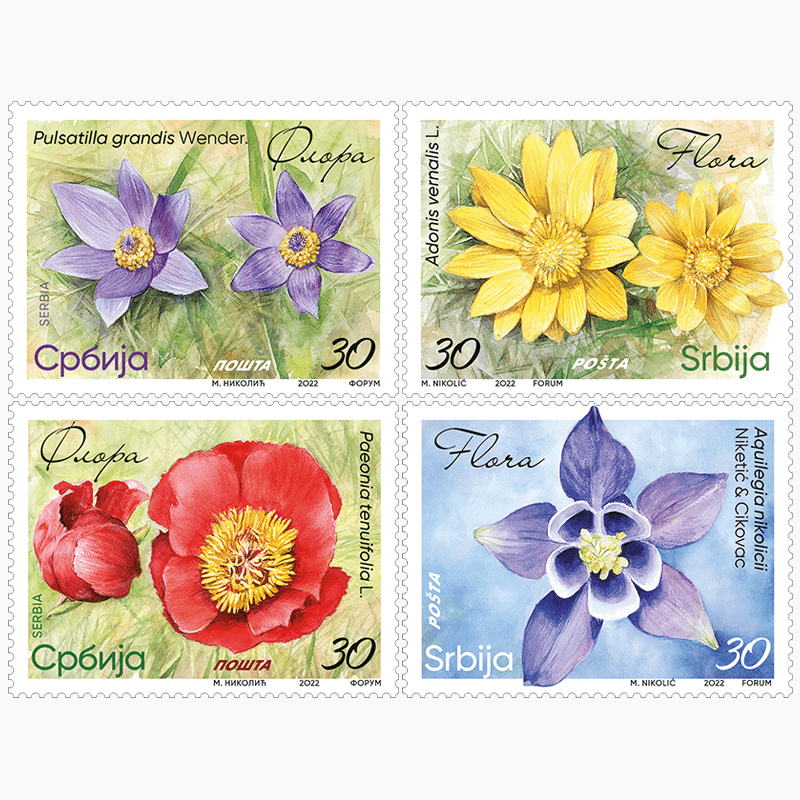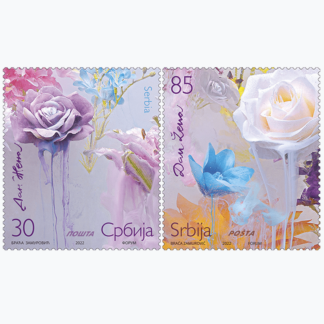Description
Pulsatilla grandis Wender. (Ranunculaceae) – Greater Pasque Flower
Perennial herbaceous plant, with dense silvery patent hairs and solitary large flowers. It has about ten basal leaves, crowded at the base in a rosette, three to four times pinnately divided, with (20)40–90 lobes. The flowers are 5.5–8.5 cm in diameter, cup-shaped; pedicels are erect or later slightly bent. It also has six sepals, lavender to lilac-purple, covered with adjacent silky hairs on the outside. Numerous anthers are half shorter than the petals. The fruits are collected at the top of the pedicels, with 3.5–5 cm long, silky hairy styles, which is why they are also popularly called cat’s mustache.
As a steppe relic, it appears in Serbia only on the sunny slopes of Mt Fruška Gora, on pastures, meadows, near the bushes and in post-fire vegetation. It blooms in March and April along with the leafing of trees. It is strictly protected and in the last 50 years it has disappeared from more than half of the sites, due to the overgrown habitats and picking of decorative flowers.
Adonis vernalis L. (Ranunculaceae) – Pheasant’s Eye
Perennial, herbaceous plant from the buttercup family, 10–40 cm high. In the ground it forms a well-developed rhizome from which arise glabrous stems that can be simple or branched. The leaves of the stem are sessile, glabrous or sparsely hairy, 2-4 times pinnately divided. The flowers are single, large, 3–7 cm in diameter with many yellow petals. The fruits are densely packed, with a hooked beak. It is a poisonous plant. It was once used in the treatment of diseases of the cardiovascular system, as a cardiotonic and strong diuretic.
As a steppe relic, with its large and bright yellow flowers during the spring months (April and May) it adorns dry meadows and steppes, the edges of xerophilous forests, but also some bright deciduous forests, as well as xerophilous rocky landscapes. In Serbia, the distribution of this species is related to the lowland and hilly regions of Vojvodina, eastern and north-eastern Serbia. In the past, it was far more widespread than it is today. It is a strictly protected species in Serbia.
Paeonia tenuifolia L. (Paeoniaceae) – Fernleaf Peony
The fernleaf peony belongs to the peony family. The genus name (Paeonia) comes from the Greek god of medicine, Peon. Perennial, herbaceous plant up to 70 cm high. In the ground it forms a developed tuberous root from which above-ground shoots emerge, which they grow in tufts. The leaves are green, glabrous, and divided into very narrow linear leaflets. The flowers are arranged terminally, single, large and red. The anthers are numerous and intensely yellow. The fruits are hairy follicles. The seeds are large and overgrown with white arilus. It blooms in spring (April and May). lt is a poisonous plant and can cause inflammation of the intestinal and gastric mucosa when taken orally.
This species of peony is a relatively rare plant in Serbia, and can be found in Vojvodina (Banat) and eastern Serbia. It is a steppe relic and grows within meadow-steppe communities and pastures, in dry, warm and sandy places, up to 1300 m above sea level. It is a strictly protected species in Serbia.
Aquilegia nikolicii Niketić & Cikovac (Ranunculaceae) – Nikolić’s Chandelier
Perennial herbaceous plant up to 50(–80) cm tall. The leaves are bipartite, sticky glandular or finely hairy on both sides, rarely glabrous on the surface. Petioles have numerous patent hairs. The flowers are solitary, large, with five broad flattened and nodding dark purple outer petals, 40 (-60) mm long. The inner circle of the perianth is formed by five obliquely placed leaves transformed into funnel-shaped nectars, which in the upper part spread into 15–19 mm long upright spurs curved at the top. The fruit is a dry follicles dehiscing by inner suture.
It was described as a new species for science in 2013 from the Drina canyon at the foot of Mt Tara Planina in western Serbia. This relict and endemic plant can be found only in a few more gorges in western Serbia and Montenegro, where it grows in limestone rocks crevices in wet and shady places. It is strictly protected in Serbia. It is most easily distinguished from ordinary cultivated chandeliers by its strikingly two-colored flowers.
Expert collaboration: Marjan Niketić, PhD Museum advisor and corresponding member of SANU, Natural History Museum in Belgrade and Uroš Buzurović, PhD Curator and research associate, Natural History Museum in Belgrade
Artistic realization of the issue: Miroslav Nikolić






